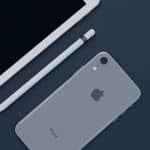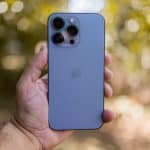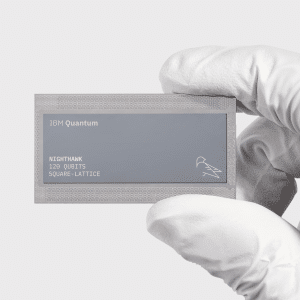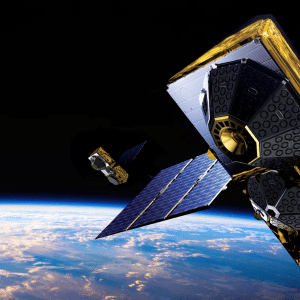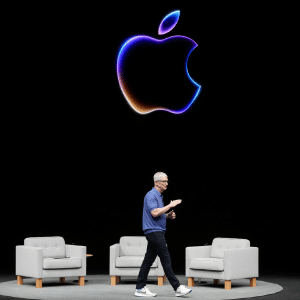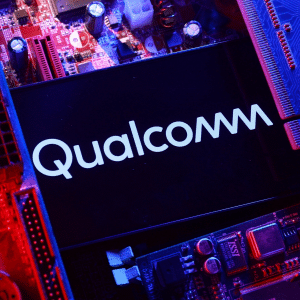
Guests pack all 2,300 seats at the Flint Center in Cupertino, California. At 10:00 AM, the lights in the auditorium dim and a video flashes onto the screen. The message is, as usual, about Apple’s focus on opportunities to “change things.” CEO Tim Cook takes the stage as soon as the video is over. He warmly welcomes the audience. He points out the building’s historic importance for Apple. It was there that Steve Jobs introduced the first ever Macintosh in 1984 and, fourteen years later, resurrected the faltering Apple with the introduction of the iMac. The last time an Apple product was debuted in the Flint Center was in 1998 when Jobs introduced the iMac SE. But after Cook rifles through these fun facts, he does something unusual. In other keynotes, Cook would normally go into Apple’s numbers (“We sold this much of this product”, “The number of people using this product is…”, and so on) as well as updates on what the company has been up to. This time around, he says there is no time to waste, that “we have a lot to cover.” He jumps straight to the products
“Today, we are launching the biggest advancement in the history of iPhone.”
 After a little bit of background on Apple’s flagship phone, we see the first images of the iPhone 6. Sleek, edge-to-edge black. Curved edges. A protruding camera. While the black model is gorgeous, more images show that it isn’t the only color. We see the phone in brushed silver and pale gold. We see images of two phones side by side, and we’re told that there are two versions of this next-generation iPhone: the iPhone 6 and the iPhone 6 Plus.
After a little bit of background on Apple’s flagship phone, we see the first images of the iPhone 6. Sleek, edge-to-edge black. Curved edges. A protruding camera. While the black model is gorgeous, more images show that it isn’t the only color. We see the phone in brushed silver and pale gold. We see images of two phones side by side, and we’re told that there are two versions of this next-generation iPhone: the iPhone 6 and the iPhone 6 Plus.
A few of the specs include:
- Sizes 4.7″ and 5.5″
- Ion strengthened Retina HD display
- Power button on the side
- 64-bit A8 chip
- M8 motion coprocessor
- New gesture “Reachability”
- Wi-Fi calling
- 8MP iSight camera with True Tone flash
iOS 8 was talked about very briefly during the iPhone 6 presentation–not in-depth at all, which was a surprise. The Apple team was rocketing through the keynote.
In short, we see two beautiful iPhones, thinner, with bigger screens and fantastic new features. “I hope you’ll agree, they’re the best phones you’ve ever seen,” Cook says. The entire audience agrees with massive applause.
The iPhone 6 and iPhone 6 Plus start at $199 and $299, respectively. Preordering start on September 12, and shipping begins September 19.
An entirely new category of service.
 After showing off the iPhone 6 and iPhone 6 Plus, Cook gets into mobile payments. Gesturing to the overstuffed wallet on the projection screen, he states, “Our ambition is to replace this.” An infomercial-esque video details the complications of using a credit card. If you’re a woman, you have to fumble through your purse. You have to pull the card out of your wallet. You have to show your ID. You swipe. Doesn’t work? Swipe again. “This whole process is based on this little piece of plastic,” Cook says. “We’re totally reliant on the exposed numbers and outdated and vulnerable magnetic stripe interface.” He goes on to tell us what we already know: mobile payments have not yet hit the mainstream due to “self-interested” business models that don’t focus on “user experience.” The solution?
After showing off the iPhone 6 and iPhone 6 Plus, Cook gets into mobile payments. Gesturing to the overstuffed wallet on the projection screen, he states, “Our ambition is to replace this.” An infomercial-esque video details the complications of using a credit card. If you’re a woman, you have to fumble through your purse. You have to pull the card out of your wallet. You have to show your ID. You swipe. Doesn’t work? Swipe again. “This whole process is based on this little piece of plastic,” Cook says. “We’re totally reliant on the exposed numbers and outdated and vulnerable magnetic stripe interface.” He goes on to tell us what we already know: mobile payments have not yet hit the mainstream due to “self-interested” business models that don’t focus on “user experience.” The solution?
Apple Pay.
The mobile payments service utilizes NFC, Touch ID, a secure element, and Passbook. It basically turns your iPhone into a mobile wallet. As many have foreseen, Apple Pay can use the card a user has on file in iTunes. Card numbers are never given to the merchant. Instead, Apple Pay uses a one-time payment number and a “dynamic security code.” The emphasis is on privacy and convenience. One-touch payment with no shared information with anyone–not merchants, not Apple.
“We’ve really gone through enough to call it a day,” Cook says to the audience. “But we’re not quite finished yet. We have…”
One more thing.
 Cook glows on the Flint Center stage as he utters the famous words that Steve Jobs did so many times. And at this moment it is clear that Cook has come into his own as Apple’s leader. He gets poetic about Apple’s desire to make good products, building up to what everyone has been waiting for. “We believe this product will redefine what people expect from its category,” he says. “I am so excited and I am so proud to share it with you this morning.” Cue the video. Closeups of the new product: the Apple Watch.
Cook glows on the Flint Center stage as he utters the famous words that Steve Jobs did so many times. And at this moment it is clear that Cook has come into his own as Apple’s leader. He gets poetic about Apple’s desire to make good products, building up to what everyone has been waiting for. “We believe this product will redefine what people expect from its category,” he says. “I am so excited and I am so proud to share it with you this morning.” Cue the video. Closeups of the new product: the Apple Watch.
The display is square and curves down the edges of the body. Rectangular bezel and rectangular screen are juxtaposed by circular user interface elements. Watches of different metals and sporting all kinds of straps float in and out of view. The display is, as suspected, sapphire crystal. Apple Watch has a touch screen and a dial called the “digital crown,” a feature that allows you to zoom in and out as well as scroll through lists.
The watch offers “new intimate ways to connect and communicate” from your wrist. It’s a health and fitness device. It is Apple Pay compatible. When your watch receives a message, the watch gives you a quick-reply list to choose from. You can also reply by dictation or using emojis. You can send a little sketch to a friend who has an Apple Watch, too. You can even send them your heartbeat, which manifests as tiny vibrational pulses in the receiver’s watch. The one catch about the Apple Watch is that you must have an iPhone to use it.
The watch has three models: Apple Watch, Apple Watch Sport, and Apple Watch edition. It comes in two sizes, three finishes, and has multiple straps to choose from. Apple Watch will be available in early 2015 starting at $399.
A surprise performance from U2 concluded the event. Their newest LP, “Songs of Innocence”, is now on iTunes for free as a gift from Apple to its customers.
Read more details about Apple’s keynote in this week’s issue. We’ll be providing in-depth reviews of each product and service mentioned during the event, starting with the Apple Watch. Click this link to subscribe now.


